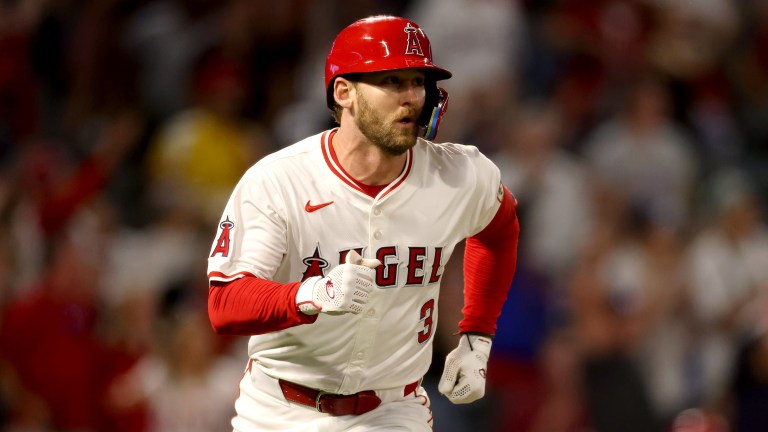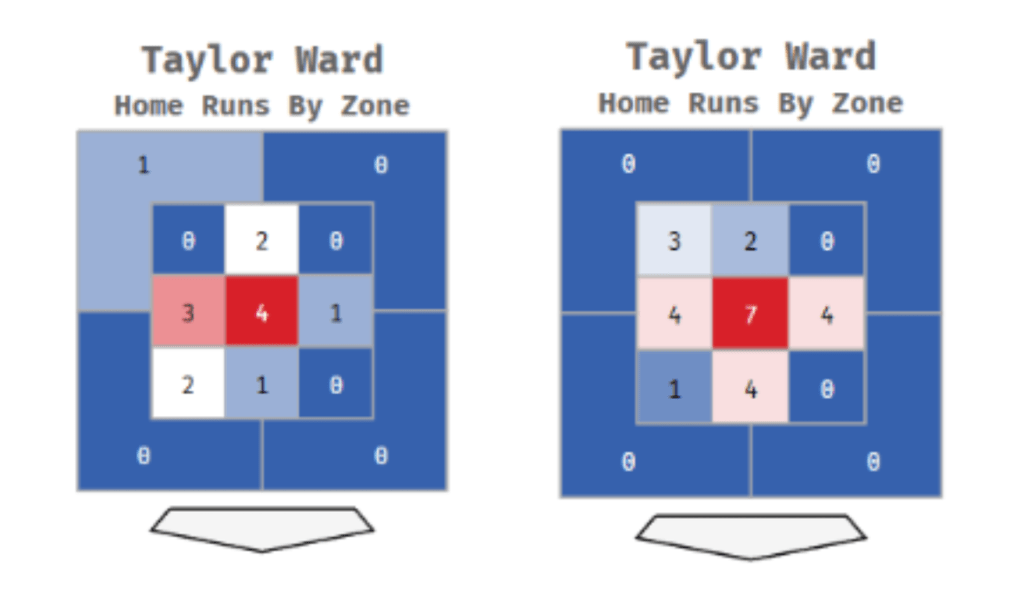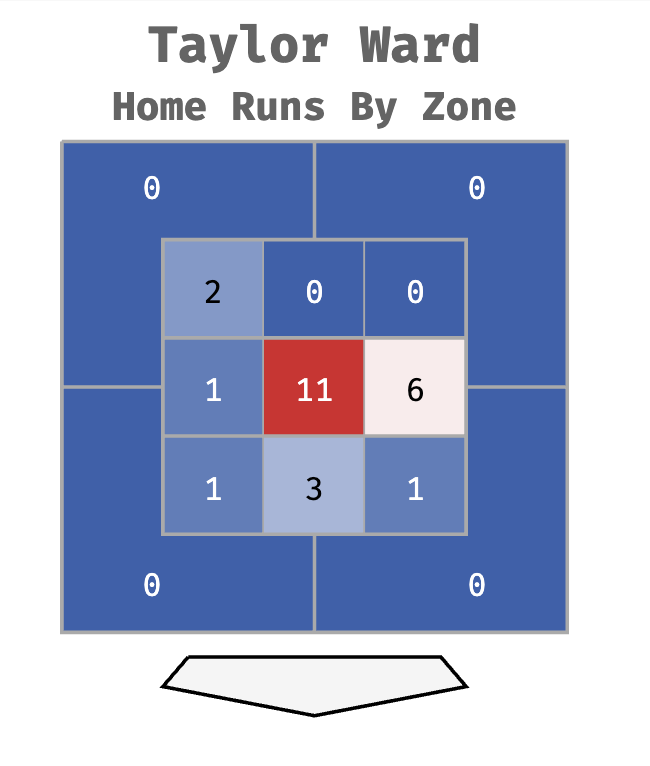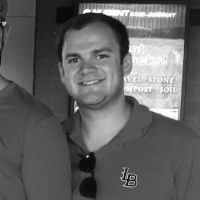How Much Trade Value Does Taylor Ward Have for the Angels?
Moving Ward at this year's deadline makes too much sense, even for the always unpredictable Angels.

The trade deadline season was jump-started earlier this month, with the Mariners acquiring Josh Naylor, the Yankees landing Ryan McMahon, and the Mets dealing for lefty Gregory Soto before the weekend started. Movement might have begun earlier than expected, but I still anticipate this year’s deadline being weaker than normal.
With that being said, teams with controllable pieces that they are willing to move could look to capitalize on the lack of names available, which brings me to Taylor Ward of the Angels.
Ward, 31, was a late bloomer who had a breakout season in 2022, slashing .281/.360/.473 with 23 home runs and a 136 wRC+. Although his ’22 season still stands as his high-water mark, Ward has settled into being an above-average bat with pop and the always coveted additional year of control.
We all know the Angels drive the backroads. Rarely predictable, always questionable. Applying the same logic to them as you do all other teams (minus Colorado) wouldn’t be fair. But, now trending toward their 10th straight losing season, moving Ward makes too much sense, even for the Angels.
Ward’s 2025 Output
Since his breakout at age 28, Ward’s production has been pretty similar. A 108 wRC+ in 2023, 112 in 2024, and 117 this season. His walk rate has sat just under 10% in each of those three seasons, while his batting average has dropped slightly, but the power has ticked up.
Ward is currently in the midst of his best power season of any year, posting a .259 ISO, well above his previous .192 career high. He has already racked up 25 home runs, tying his career best.
In many ways, Ward is a typical complementary power bat. He has some swing and miss issues, but he walks at an above-average rate and can put up 25-30 home runs.
So, how much do we read into this season’s 38 home runs pace? The typical markers of power are relatively the same from years prior – average exit velocity, launch angle, barrel rate, and so on. If you were to look at his data, all you would see are extremely consistent numbers year over year.
One big difference? Ward has been served up some meatballs and is taking advantage at a better rate than in previous seasons.
Take a look at Ward’s home runs by zone in 2023 and 2024:

…compared to 2025:

As you can see from the graphics above, Ward has already hit 11 middle-middle home runs, as many as in his previous two seasons combined, in only 105 games. He’s slugging 1.109 on middle-middle pitches compared to .635 last season and .610 in 2023.
Doing damage on mistake pitches is a big part of being a power hitter. Oftentimes, you earn those mistakes by laying off pitches outside of the zone, an area where Ward excels.
This is not to take anything away from Ward. He’s not the one placing the pitches. But, it does give some perspective on his home run pace and why it might be safer to bank on the underlying data and career norms when determining his trade value.
Regardless, Ward’s year-over-year consistency gives an acquiring team a comfortable baseline. He’s an above-average hitter against righties, crushes lefties, and can change the course of a game with one swing. I don’t see him as the key to unlocking a team’s offensive potential, but he’s a complementary piece that can absolutely beef up the middle of almost any team’s order.
Of course, as is the case with any trade, it all comes down to one question: How much will it cost?
What It Will Take To Acquire Ward
Since we have already laid out what type of player a team would be acquiring in Ward, we can shift our focus to the second most important factor in determining his trade value: his contract.
Ward would come with the salary remaining on his $7.825 million contract for 2025, as well as one more year of arbitration eligibility. Next year, especially if his home run total continues to build, we could be looking at a salary north of $10 million.
Sure, a team could acquire Ward, pay whatever his salary is next season, and then let him hit the market. However, considering Ward will be 32 when he hits free agency, he could be more likely to try to sign an extension this offseason and capitalize on his strong power season.
Most players reach their final year of arbitration at a younger age. However, this wrinkle could actually help boost his value, as an acquiring team likely has a better chance of reaching an extension with him than in most situations with a player entering his last year of arbitration eligibility.
If true, we could see a few smaller market teams join the sweepstakes, such as Cincinnati, with hopes of locking him up to a multi-year deal. More teams equals more bidding and a higher return for the Angels.
As I mentioned before, trying to predict what the Angels will do is like trying to predict what a four-year-old will say. Even with a few of the top prospects in their system being pitchers, I lean towards arms as their top target. Yusei Kikuchi and Jose Soriano are essentially their only “sure things” in the rotation going forward.
Teams who could be in the mix are the Astros, Mariners, Blue Jays, Padres, Phillies, Reds, and even the Rangers and Giants, depending on other moves. Yes, most contenders, and rightfully so.
Cincinnati has a number of arms, like Chase Petty or Adam Serwinowski, who I think teams will value higher than their organizational rankings. Houston makes a ton of sense, but their system is not as strong as others, though that could actually push them towards making this one deal and keeping Ward around.
Toronto, who should be aggressive at the deadline, would love to put Ward in left and team him up with a (hopefully healthy) Daulton Varsho and Anthony Santander. The Angels seem like a team that would be willing to take on the injury risk of Ricky Tiedemann in a package of some sort. Maybe they could include Luis Rengifo and ask for more in return from the Blue Jays.
The Angels are going to try to at least look like a competitive team on paper as long as Mike Trout is around. They have established a couple of core pieces this season, and adding players who are MLB-ready, or very close, is probably their preferred route, if that opportunity presents itself.
Final Thoughts
There have been rumblings and reports of the Angels actually selling this season, which is exactly what they need to do. Of their available players, Ward likely nets them the greatest return. If they can add two prospects to the back end of their organizational top 10, I think they jump on it. Would I love to solve their third base woes? Yes, but I’m not touching that curse today.
You don’t have to squint too hard in order to see a path where the Angels have a competent team in the next couple of years. You know they will be willing to throw some money around in free agency, but using Ward to help improve their farm system and add a couple of young players to their foundation is crucial for their next steps.

